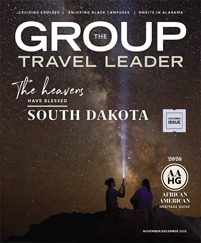ST. LOUIS — International travel into the United States peaked in 2018 and slightly declined in 2019, according to Erin Francis-Cumming, president and CEO of Destination Analysts, a global research firm that provides visitation data to destinations around the world. Francis-Cumming shared her firm’s research, based on a sample of more than 11,000 active worldwide travelers, at a session held December 2, 2019, at the Travel South International Showcase in St. Louis, Missouri.
“Visitation decreases to the U.S. from China and Germany are the most pronounced this year,” she said, “while visitation from Canada and Mexico is actually up. The reasons most cited for these decreases are the overall economics and expense of coming to the United States, plus the political climate that exists currently between these countries.”
Despite the decreases for 2019, the United States remains at the top of worldwide travel bucket lists by a large margin. When asked what country international visitors most want to visit, the United States enjoys almost a two-to-one margin in popularity over its nearest competitors: Spain and France.
Speaking to an audience that included officials from 12 Southern states, Francis-Cumming drilled down into visitation to the destinations represented by Travel South USA.
“Travelers are hot for the South,” she said, “but it is the more experienced travelers who are coming here. International travelers still tend to start on both coasts in places like New York, California or Florida, but 23.7% of our sample indicate they plan to visit the South. These are the more experienced travelers in the survey who are coming multiple times to the U.S. and are getting beyond the coasts.”
“We believe we’ll be flat for the year,” said Travel South USA president and CEO Liz Bittner after the session. “We don’t get the huge fluctuations in international visitation because travelers to the South are not as affected by the economy or political issues. As Erin’s data shows, our visitors are more seasoned. They are not influenced by the rhetoric they may be hearing in their countries about political differences.
“Our international visitors are spending an average of 17 days in the South and are visiting 4.4 states during their stays,” said Bittner. “Collectively, this is the market we want to address. Our states want to go after new money — international money. We have direct flights coming into cities like Atlanta, New Orleans, Charlotte [North Carolina], Nashville [Tennessee] and Charleston [South Carolina]. Once these travelers are here, they want to get out and see the real South, the authentic South.”









